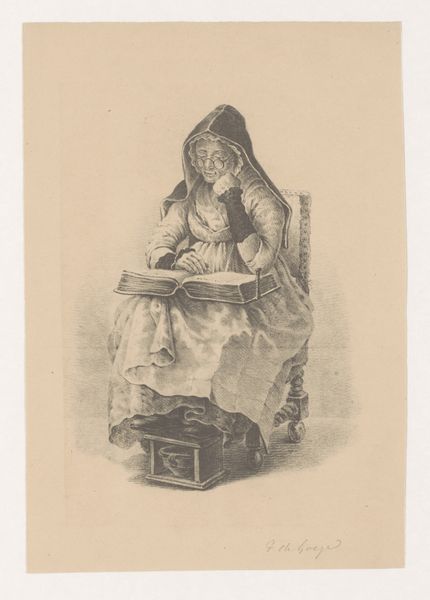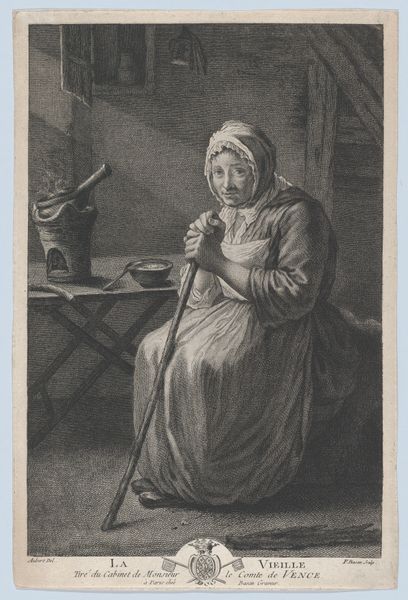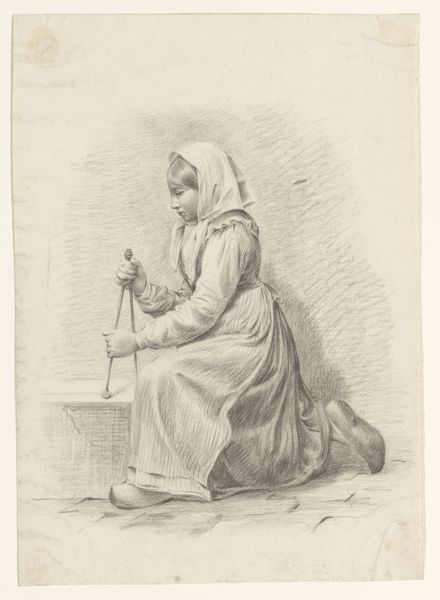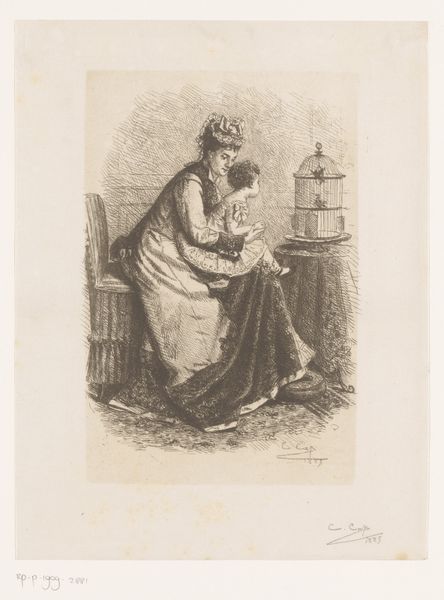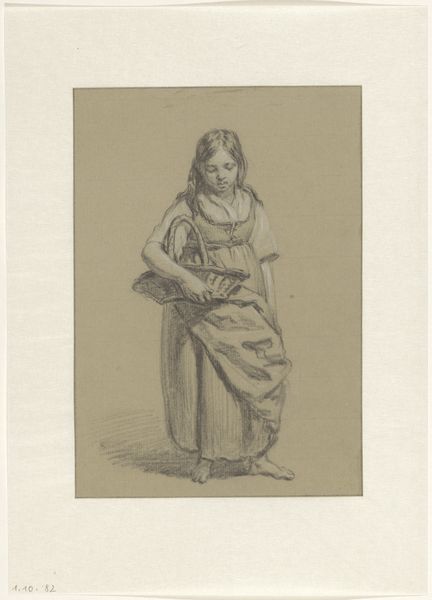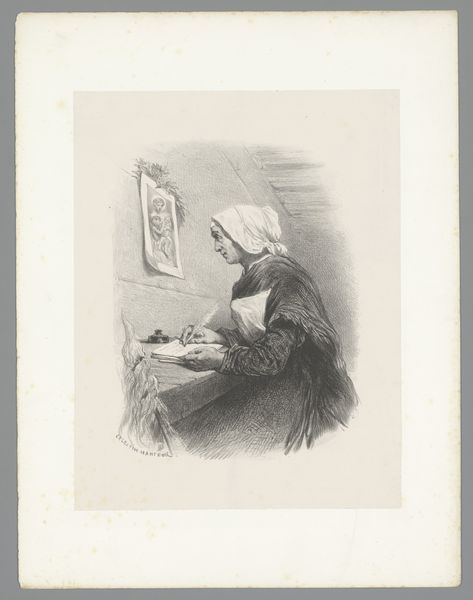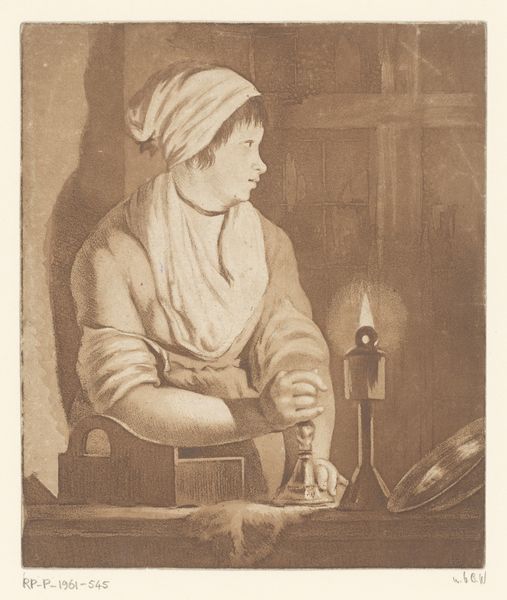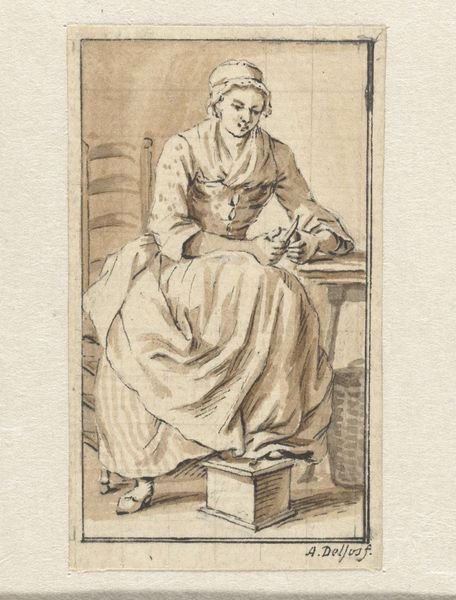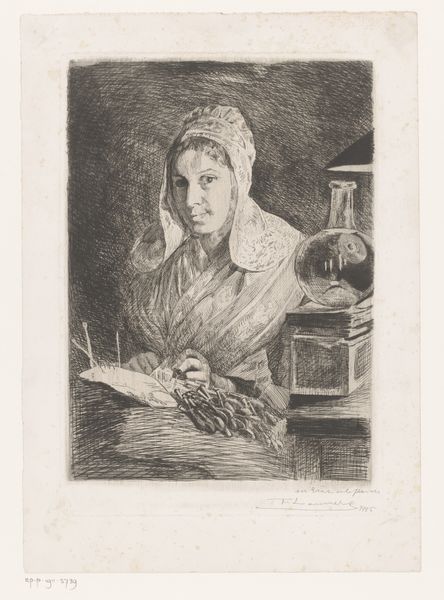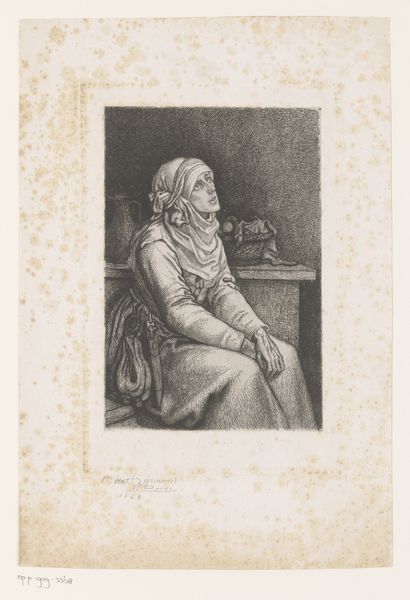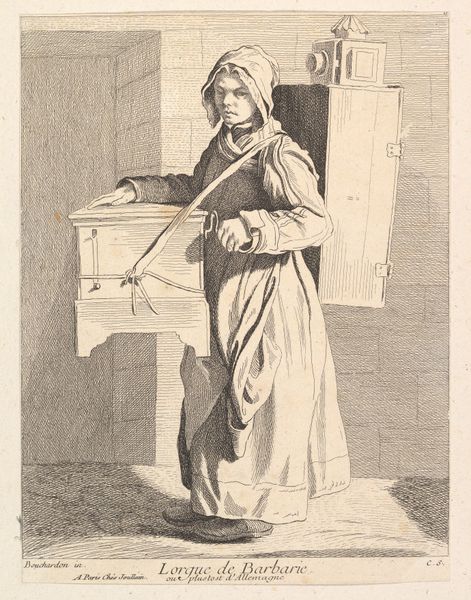
Zittende vrouw met de voet op een stoof, een brief lezend 1809 - 1869
0:00
0:00
drawing, pencil
#
portrait
#
drawing
#
charcoal drawing
#
figuration
#
pencil drawing
#
romanticism
#
pencil
#
portrait drawing
#
academic-art
Dimensions: height 452 mm, width 297 mm
Copyright: Rijks Museum: Open Domain
Editor: Here we have Alexander Cranendoncq's "Zittende vrouw met de voet op een stoof, een brief lezend", placing the date somewhere between 1809 and 1869. It's a delicate pencil drawing. I'm struck by the way light and shadow are rendered to create such depth and a sense of introspection. What stands out to you? Curator: Looking at this, I immediately think about the materiality of its production. What kind of pencil did Cranendoncq use to achieve these subtle gradations? And how was this paper manufactured – was it handmade, influencing the artist’s process? The presence of the "stoof," a foot warmer, suggests not just comfort, but a particular socio-economic context. This wasn’t a scene accessible to all. Editor: That’s fascinating. I hadn't considered the significance of the foot warmer as a marker of class. Does the act of letter reading carry a specific weight in that context, too? Curator: Absolutely. Letters were a primary means of communication, particularly across distances. Access to literacy and the postal service wasn't universal. The contents of that letter, the labour involved in writing and delivering it, are all invisible aspects that add layers to our understanding. Editor: So, the image isn’t just about the woman; it’s also about the unseen labor and economic structures that shaped her world. Curator: Precisely. Even the creation of the drawing itself is labor. Consider the time Cranendoncq invested, the skill developed through practice, the economic value placed upon that skill. The finished piece obscures the complex process and societal forces behind it. What more could be said about the role of female labor in this historical period? Editor: I never thought of it like that before. Thanks to your insights, I'm beginning to grasp art as a product of its time, shaped by material realities and labor. Curator: Indeed! By focusing on the 'how' and 'why' of its creation, we unlock deeper understandings of art's role in reflecting, and sometimes even challenging, social norms.
Comments
No comments
Be the first to comment and join the conversation on the ultimate creative platform.
